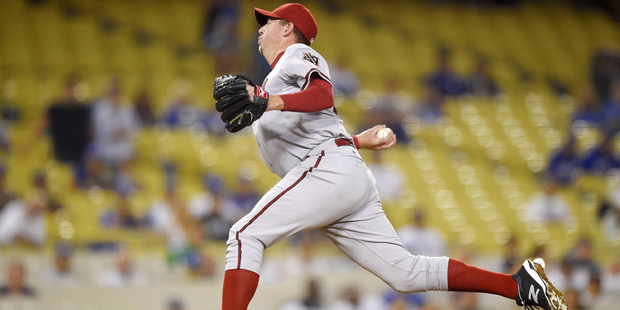

This is what I think we’ll see more of out of sidearmers going forward. While his command may not be as sharp as some of the other great sidearm pitchers, it’s certainly nothing out of the ordinary for a high-octane, strikeout-oriented relief pitcher. He also has solid control over his pitches with a career 7% walk rate. The funk and suddenness of his delivery help his pitches play up quite a bit as well. It tunnels well with his slider, and the movement difference and velocity gap create whiffs despite below league average speed and rise. He also has a 4-seam fastball that he loves to turn to in 2-strike counts. A frisbee of a slider with elite spin efficiency that causes it to bend violently to the glove side. He possesses a heavy sinker that induces ground balls at will.

Ryan Thompsonis the prototype for a sidearm pitcher. There are good ones and bad ones here, just like with the rest of the league. They are certainly benefitted by the monstrous season Aaron Loup had, but that’s evened out by a few pitchers who totaled about 5% of the 784 innings but accounted for 15% of the earned runs. While it’s certainly a smaller sample size compared to the rest of the league, the 784 combined innings that the sidearmers threw show promise as to their effectiveness as a group. On the whole, they pitched to numbers that were either near equal to or better than the league average. Of that half, only three had an ERA above 4.00. Only half of them pitched more than 20 innings last season. Because every one of my 26 sidearmers is a relief pitcher, most of them suffer the same volatility commonly seen with many bullpen arms. Nevertheless, I think my (mostly) comprehensive list is a good enough pool to evaluate the modern low-slot pitcher. Yours may differ from mine on some of the closer cases. This also relies on my opinion of whether or not a pitcher is throwing sidearm. There are likely a few sidearmers who slipped through the cracks. Is this method perfect? No, probably not. I did the same for 2016 and found just 16 total. So I went through all 32 analyzing their deliveries the best I could, going frame by frame to check their arm slot. However, it included Craig Kimbrel who is decidedly not a sidearmer. The minimum requirement which I decided to set for a pitcher to qualify was that 80% of all pitches be thrown at or below five feet, but my job still wasn’t done. From there, I decided to make a cutoff point to eliminate pitchers who only drop down to that arm slot occasionally, a la Rich Hill or Nestor Cortes Jr. I started with every pitcher that released at least one pitch five feet off the ground or lower in 2021.


After several configurations of Baseball Savant searches, I finally found a way around it. There’s no measurement out there that I could find that depicts how a pitcher’s arm is angled at release. Finding every sidearm/submarine pitcher in MLB today proved to be a more difficult endeavor than I had originally envisioned. As is true with pitching three-quarters or overhand, it’s all in learning to do it properly.Īt its core, sidearm pitching is releasing the ball with your throwing arm parallel to the ground or lower. As many times as it’s been said, it’s never actually been proven. There’s a widespread opinion that throwing sidearm leads to more injuries. It’s usually learned by choice and is often developed after failed attempts to pitch with a more conventional arm slot. The vast majority of young baseball players don’t naturally find themselves throwing sidearm. The most obvious answer is that when a kid first picks up a baseball their first instinct isn’t to throw it from the side. In fact, this type of motion is making a resurgence and it’s creating some of the most interesting and entertaining pitchers in baseball today. However, underhand and its more modern cousin, the sidearm delivery, never fully died out. It was easier to control the ball and manipulate it to move in different ways with this method. This led to pitchers slowly but surely gravitating towards a more natural overhand throwing motion. This meant pitchers were more of a means to an end, lobbing the ball to induce contact. Fans wanted action- balls in play were what made the game fun to watch. When organized baseball first came about, pitchers were only allowed to throw underhand.


 0 kommentar(er)
0 kommentar(er)
